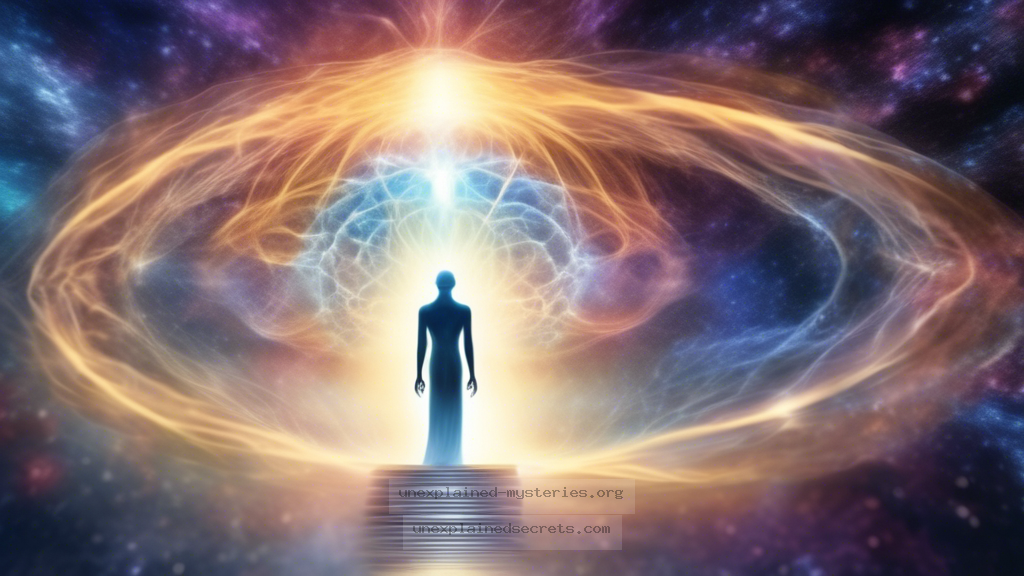What Secrets Do Near-Death Experiences Reveal About Consciousness Beyond Death?
What Secrets Do Near-Death Experiences Reveal About Consciousness Beyond Death?
Near-Death Experiences (NDEs) have captivated humanity for centuries, raising profound questions about the nature of consciousness, life after death, and the very essence of our existence. What happens when we die? Are our minds merely products of biological processes, or is there something more transcendent that continues beyond physical life? This blog post delves into the compelling mysteries surrounding NDEs, exploring their implications for our understanding of consciousness and the afterlife.
Historical Context of Near-Death Experiences
Throughout history, reports of NDEs have been documented across various cultures and religions. Ancient texts from the Egyptians to the Greeks discuss experiences akin to modern NDEs, where individuals describe leaving their bodies, encountering bright lights, or meeting deceased relatives. One of the earliest recorded examples can be found in the writings of Plato, who spoke of the soul’s journey after death.
In the 19th century, the phenomenon gained scientific attention. In 1975, Dr. Raymond Moody published “Life After Life,” a seminal work that categorized common elements of NDEs, such as feelings of peace, detachment from the body, and encounters with light. This book opened the floodgates for scientific inquiry, leading to a surge of interest in researching NDEs as a legitimate area of study.
Core Concepts of Near-Death Experiences
NDEs typically encompass a series of experiences that occur when a person is close to death or has undergone a life-threatening situation. Common elements reported include:
- Out-of-body experiences (OBEs)
- Feelings of peace and detachment
- Traveling through a tunnel
- Encountering deceased loved ones or spiritual beings
- Life review or panoramic life experiences
- Return to the body and feelings of reluctance
These elements suggest that consciousness may operate independently of the physical brain, challenging the materialist view that equates consciousness solely with brain activity. As researchers like Dr. Bruce Greyson have noted, the consistency of these experiences across different cultures and backgrounds raises intriguing questions about the universality of consciousness beyond the physical realm.
Scientific Research and Evidence
Scientific inquiry into NDEs has mainly focused on understanding the neurological and psychological aspects of these experiences. A study published in the “Resuscitation” journal in 2014 revealed that 39% of cardiac arrest patients reported some form of conscious experience during their clinical death, while Dr. Sam Parnia’s AWARE study unveiled more about the experiences of patients during cardiac arrests.
Despite the skepticism surrounding the subject, some scientists argue that the findings indicate a form of consciousness that exists outside the body. For instance, the phenomenon of patients describing events or conversations occurring around them while they were clinically dead raises questions about the limits of our understanding of consciousness.
Real-World Examples of Near-Death Experiences
Numerous accounts from individuals who have undergone NDEs provide compelling evidence for the phenomenon. One of the most famous cases is that of Dr. Eben Alexander, a neurosurgeon who, during a coma caused by bacterial meningitis, experienced a vivid journey through a realm of consciousness beyond the physical world. His book, “Proof of Heaven,” describes encounters with divine beings and a sense of unconditional love that profoundly transformed his understanding of life and death.
Another notable case is that of Pam Reynolds, who underwent a rare surgery to remove a brain aneurysm. During the operation, she reported a detailed account of her surroundings, including conversations between medical staff, despite being clinically dead and having her brain activity monitored. Her experience adds weight to the argument that consciousness may not be merely a byproduct of brain functions.
Practical Implications of Near-Death Experiences
The implications of NDEs extend beyond philosophical musings; they affect how we view life, death, and the grieving process. Many individuals who have had NDEs report a transformed perspective on life, often becoming more compassionate, less fearful of death, and more focused on meaningful relationships. This transformation can also influence the way society approaches death, encouraging a more open dialogue about mortality.
Additionally, healthcare professionals are beginning to recognize the importance of addressing the emotional and spiritual needs of patients facing terminal illnesses. Integrative approaches that include psychological support, spiritual counseling, and palliative care are becoming more prevalent in medical settings.
Alternative Perspectives on Near-Death Experiences
While many embrace the spiritual interpretations of NDEs, skeptics argue that these experiences can be explained through physiological and psychological factors. Some propose that NDEs result from brain activity during trauma, oxygen deprivation, or the release of endorphins, which can create sensations of peace and euphoria.
Furthermore, critics point out that NDEs often reflect an individual’s beliefs, cultural background, and personal experiences. For instance, a person raised in a religious environment may interpret their NDE through the lens of their faith, while someone with a secular worldview may not.
Common Misconceptions About Near-Death Experiences
Several misconceptions surround NDEs, often leading to misunderstandings about their nature and significance. Some prevalent myths include:
- All NDEs are positive: While many report uplifting experiences, some individuals recount distressing NDEs, prompting discussions about the psychological implications of such experiences.
- NDEs are purely hallucinations: Critics often dismiss NDEs as mere hallucinations; however, many reports include verifiable details that challenge this perspective.
- Only those who are religious have NDEs: NDEs span across various religious and non-religious backgrounds, suggesting a universal aspect to these experiences.
Addressing these misconceptions is vital for fostering a deeper understanding of NDEs and their potential implications for consciousness and the afterlife.
Best Practices for Investigating Near-Death Experiences
For those interested in studying NDEs, several best practices can enhance understanding and exploration of this intriguing phenomenon:
- Empirical Research: Engage in systematic studies that include a diverse range of participants to gather comprehensive data on NDEs.
- Interdisciplinary Approaches: Collaborate with neuroscientists, psychologists, and spiritual leaders to develop a rounded perspective of NDEs.
- Ethical Considerations: Ensure that research respects participants’ experiences and beliefs, prioritizing their emotional and psychological well-being.
Future Developments and Ongoing Research
The study of NDEs is a growing field, and ongoing research continues to unveil new insights into consciousness and the afterlife. Future studies may focus on:
- Investigating the neural correlates of NDEs to understand their physiological basis better.
- Exploring the long-term psychological effects of NDEs on individuals’ lives and how these experiences influence their worldviews.
- Conducting cross-cultural studies to understand how different societies interpret and experience NDEs.
As the scientific community becomes more open to exploring the mysteries of consciousness, the potential for groundbreaking discoveries grows. The intersection of science and spirituality may reveal a deeper understanding of the human experience and what lies beyond.
Conclusion: The Enigmatic Nature of Consciousness
Near-Death Experiences remain one of the most compelling mysteries of human existence. They challenge our understanding of consciousness, life, and death, prompting us to reconsider what it means to be alive. While scientific exploration continues, the emotional, psychological, and spiritual aspects of NDEs remind us that our understanding of consciousness may extend far beyond the physical realm.
As we delve deeper into the secrets of NDEs, we may find that these experiences not only illuminate the afterlife but also transform how we live our lives. Embracing these mysteries can foster a renewed appreciation for life, love, and the connections that bind us all. 🌟
Other Articles
Recent Posts
- What Happened to Flight MH370? The Conspiracy Theories That Still Haunt Us
- What Secrets Lurk Within the Walls of the Infamous Trans-Allegheny Lunatic Asylum?
- What Evidence Supports the Existence of Bigfoot in the Pacific Northwest?
- What Happened to the Indus Valley Civilization? Unraveling the Mysteries of Ancient Urban Life
- Can Telepathy Be Scientifically Proven Through Laboratory Evidence?







